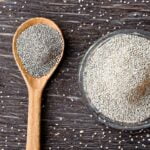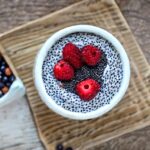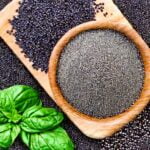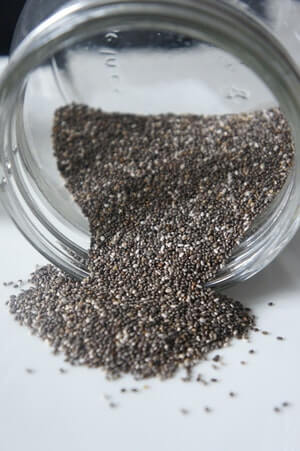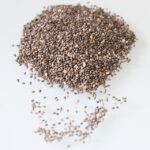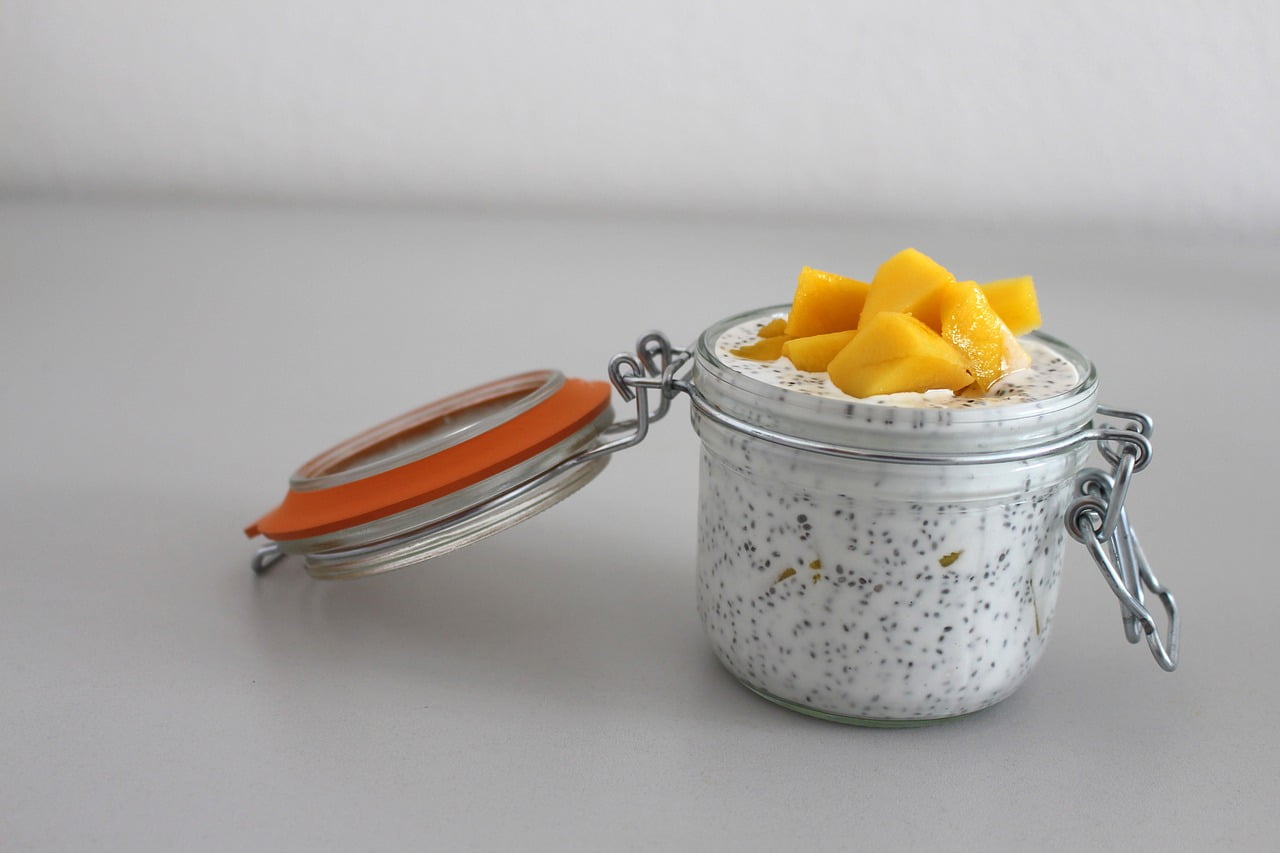
Chia seeds have gained a lot of popularity in recent years for their nutritional benefits. These tiny black and white seeds are packed with fiber, protein, and omega-3 fatty acids, making them a popular addition to smoothies, oatmeal, and yogurt. One of the most common questions asked about chia seeds is whether they can be soaked in milk.
In this post, we’ll explore the answer to that question and why soaking chia seeds in milk can be beneficial.
Soaking Chia Seeds in Milk
First, let’s talk about the basics of chia seeds. Chia seeds are an excellent source of fiber, containing both soluble and insoluble fibers. The soluble fiber in chia seeds absorbs water and forms a gel-like substance in the digestive tract.
This can help slow down digestion and keep you feeling full for longer. The insoluble fiber in chia seeds promotes bowel regularity and helps prevent constipation.
In addition to fiber, chia seeds are also a good source of protein. They contain all nine essential amino acids, making them a complete protein source. Chia seeds also contain omega-3 fatty acids, which are important for heart health and brain function.
Now, let’s talk about soaking chia seeds in milk. Soaking chia seeds in liquid, whether it’s milk or water, is a popular way to consume them. When chia seeds are soaked in liquid, they absorb the liquid and become gelatinous. (See How to Soak Chia Seeds – Overnight or Quickly) This can give them a pudding-like texture, making them a popular ingredient in chia seed pudding recipes.
If you’re looking for recipe inspiration, there are countless ways to use soaked chia seeds. Chia seed pudding (or chia pudding) is a popular option, and you can customize it with different flavors and toppings. You can also add soaked chia seeds to smoothies, oatmeal, or yogurt for an extra boost of nutrition. Some people even use soaked chia seeds as an egg substitute in baking recipes! (See also: Should You Soak Chia Seeds Before Eating? and Can I Soak Chia Seeds in Hot Water?)
(You can even just add chia seeds directly to water and make Chia seed water)
When it comes to milk options, there are many choices to consider. Cow’s milk, almond milk, soy milk, and coconut milk are all popular options for soaking chia seeds. You can choose the milk that you prefer or experiment with different types to find your favorite.
It’s worth noting that while soaking chia seeds in milk can be beneficial, it’s not the only way to consume them. You can also sprinkle chia seeds on top of salads, stir-fries, or roasted vegetables for added texture and nutrition. You can even mix chia seeds into baked goods for a healthy twist on your favorite treats.
Benefits of Chia Seeds Soaked in Milk
When you soak chia seeds in milk, the milk adds extra flavor and nutrition to the chia seeds. Milk is a good source of calcium, vitamin D, and other nutrients that are important for bone health. (Even for plant-based milks) By soaking chia seeds in milk, you can increase the calcium content of the chia seeds, making them even more nutritious.
Soaking chia seeds in milk can also make them easier to digest. The gelatinous texture of soaked chia seeds can help break down the seeds and make them more bioavailable. This can make it easier for your body to absorb the nutrients in the chia seeds.
Another benefit of soaking chia seeds in milk is that it can help you stay hydrated. Chia seeds absorb liquid and can help you stay hydrated throughout the day. This can be especially beneficial if you struggle to drink enough water throughout the day.
How to Soak Chia Seeds in Milk
So, can you soak chia seeds in milk? The answer is yes! Soaking chia seeds in milk is a popular way to consume them and can offer a number of health benefits. Here’s how you can do it:
- Measure out the desired amount of chia seeds. A typical serving size is around two tablespoons.
- Add the chia seeds to a bowl or container.
- Pour milk over the chia seeds, using a 4:1 ratio of milk to chia seeds. For example, if you’re using two tablespoons of chia seeds, you would use eight tablespoons of milk.
- Stir the chia seeds and milk together until well combined.
- Let the mixture sit for at least 10 minutes, or until the chia seeds have absorbed the liquid and become gelatinous.
- Enjoy the soaked chia seeds on their own or add them to your favorite recipes.
It’s important to note that while chia seeds are generally safe to consume, some people may experience digestive discomfort after eating them. If you’re new to chia seeds, start with a small amount and gradually increase your intake to see how your body responds. If you experience any digestive issues, you may want to limit your intake or talk to a healthcare provider.
How Long to Soak Chia Seeds in Milk?
How long should chia seeds be soaked in milk to achieve the perfect texture and maximize their nutritional benefits? The answer depends on a few factors, including the type of milk used and personal preference.
First, let’s look at the type of milk. Chia seeds can be soaked in any type of milk, including dairy milk, almond milk, coconut milk, and soy milk. However, the fat content and thickness of the milk can affect how long the chia seeds need to soak.
If using dairy milk or another thicker, higher fat milk, such as coconut milk, the chia seeds can be soaked for as little as 20 minutes to achieve a pudding-like consistency. However, if using a thinner milk, such as almond milk or soy milk, the chia seeds may need to soak for up to an hour to achieve the desired texture.
Another factor to consider is personal preference. Some people prefer their chia seed pudding to be thicker and more pudding-like, while others prefer a looser, more liquid texture. If you prefer a thicker texture, aim to soak the chia seeds for at least 30 minutes, and up to 2 hours for a really thick pudding. If you prefer a more liquid texture, soak the chia seeds for around 15-20 minutes.
It’s important to note that chia seeds can continue to absorb liquid even after they are removed from the milk. If you find that your chia seed pudding is too thick after soaking, simply add a bit more milk or water and stir to achieve the desired consistency.
(Learn more at How Long to Soak Chia Seeds and How Long Should Chia Seeds Soak in Yogurt?)
Summary
Soaking chia seeds in milk is a great way to consume these nutritious seeds. Soaking them in milk can increase their calcium content, make them easier to digest, and help you stay hydrated. Plus, it’s a simple and delicious way to enjoy chia seeds!
So go ahead and give it a try – your body will thank you for it!
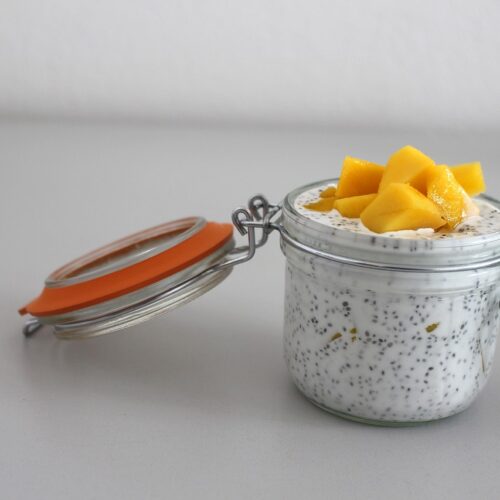
How to Soak Chia Seeds in Milk
Ingredients
- 1/4 cup chia seeds
- 1 cup milk you can use dairy milk, almond milk, or any other milk of your choice
- 1 tablespoon honey or maple syrup optional
- 1/2 teaspoon vanilla extract optional
- Fresh fruit or nuts for topping optional
Instructions
- In a mixing bowl, add the chia seeds, milk, honey/maple syrup (if using), and vanilla extract (if using). Stir well to combine.
- Cover the bowl and place it in the refrigerator for at least 4 hours, or overnight, to allow the chia seeds to soak up the liquid and expand.
- Once the chia seeds have soaked and become gel-like in texture, give them a stir to make sure they are evenly distributed throughout the milk.
- Serve the chia seed pudding in bowls or jars, topped with your favorite fresh fruit or nuts if desired.
- Enjoy immediately or store in the refrigerator for up to 3 days.
Notes
- For a creamier texture, use full-fat milk or add a dollop of yogurt to the mixture before soaking.
- Customize the flavors by adding spices such as cinnamon or cardamom, or using different types of milk such as coconut or soy.
- You can also add other ingredients to the mixture before soaking, such as cocoa powder or matcha powder, to create different flavor variations.
Lance has been passionate about the plant-based diet and we have been following a whole food plant-based diet for over 5 years. We focus on health, natural healing, weight management, animal rights, and the health of the planet and environment by focusing on whole plant-based foods and sustainable practices.
Learn more at the About Me page and follow on social media at the links below.


